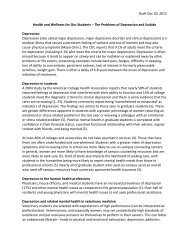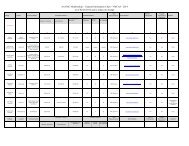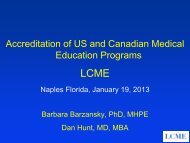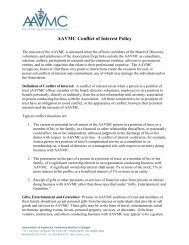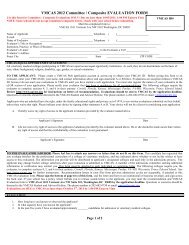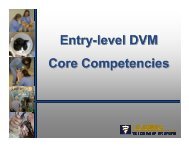Student Loans 101: Taming The Educational Loan Monster
Student Loans 101: Taming The Educational Loan Monster
Student Loans 101: Taming The Educational Loan Monster
Create successful ePaper yourself
Turn your PDF publications into a flip-book with our unique Google optimized e-Paper software.
as of 2010 they are still unaccredited. In general these loans are available to all undergraduate,graduate, and accelerated or continuing education students.a. Subsidized Stafford <strong><strong>Loan</strong>s</strong> are available only to students who have financial need. <strong>The</strong>federal government pays the interest while the student is in school and/or an internship orresidency in a post-secondary educational institution and during what is called the graceperiod. Grace periods consist of the time between graduation and a date when repayment ofall federally subsidized loans starts. This is usually six months after graduation. <strong>The</strong> annuallimit for these loans is $8,500 per year for graduate students.b. Unsubsidized Stafford <strong><strong>Loan</strong>s</strong> are available to all students, regardless of financial need.However, unless the interest on this loan is paid while students are in school, it cumulates andis added to the loan amount when payments start. <strong>The</strong> annual limit here is $32,000.(http://www.finaid.org/loans/studentloan.phtml)2. Federal Family Education <strong><strong>Loan</strong>s</strong> (FFEL). Historically, these were student loans made byprivate lenders (usually banks) that provided funds and for which students made loan repaymentsdirectly to the banks. As with Direct <strong><strong>Loan</strong>s</strong>, the federal government and guaranteed therepayment of these. FFEL loans consisting of the following: a) Stafford <strong><strong>Loan</strong>s</strong> described above asDirect loans, b) FFEL PLUS <strong><strong>Loan</strong>s</strong>, and c) FFEL Consolidation <strong><strong>Loan</strong>s</strong>. Prior to 2008, vigorouscompetition forced banks to offer FFEL loans with various types of incentives. In the heyday ofthe loan consolidation period from 2004 to 2006, these programs included reductions of 0.25% inthe interest rate for direct withdrawals from checking accounts and up to another 1% after 36consecutive on time payments. With added subsidies from state governments some studentsended up with interest rates of less than 1.5%. However, if borrowers had a month withinsufficient funds to make a payment, in many cases this reduction was lost forever.As a result of 2006 regulatory changes in educational loans made by the U.S. Congress, in 2007,the private bank FFEL lenders were pretty much knocked out of the lending business. In fact, asof the summer of 2010, it appears that these types of loans may disappear entirely, to be replacedonly with Director or private loans. (Again, visit www.finaid.com for the most up-to-dateinformation.)3. Graduate PLUS <strong><strong>Loan</strong>s</strong> (Direct and FFEL). <strong>The</strong>se loans are only available to graduate studentsand are supplemental to the $40,500 available annually via Stafford <strong><strong>Loan</strong>s</strong>. Because they arehigher risk loans, the interest rate on these loans is higher than Stafford <strong><strong>Loan</strong>s</strong>, i.e., 7.9% forDirect Grad PLUS loans. After borrowing the maximum allowed through the Stafford <strong>Loan</strong>program, students may borrow up to the cost of annual graduate school attendance via theseloans. <strong>Student</strong>s attending state schools as non-residents and/or the private schools are those mostoften using these loans. <strong>The</strong> university determines the amount needed to fulfill the cost ofattendance.4. Health Professions <strong>Student</strong> <strong><strong>Loan</strong>s</strong> (HPSL). <strong>The</strong>se, too, are need-based, long-term, low-interest(5% five percent) loans provided by the U.S. Department of Health and Human Services forhealth professional schools, including veterinary schools. If these loans are available at thestudent’s school, the financial aid office will determine the eligibility. As with subsidizedStafford loans, the interest is paid by the government while borrowers are enrolled in schools,during internships and residencies and over a one year grace period.3




